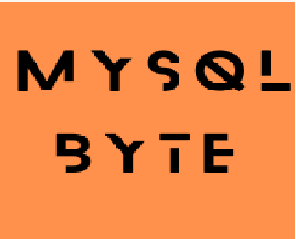MySQL High Availability (HA) refers to the ability of a MySQL system to provide uninterrupted access to data and applications even in the event of hardware or software failures. Here are some of the high availability options available for MySQL:
Load Balancing:
Load balancing can be used to distribute incoming traffic across multiple MySQL servers, improving both availability and performance. Load balancing can be done at the application level, using a load balancer such as HAProxy or NGINX, or at the database level, using tools such as MySQL Router or MaxScale.
MySQL Replication:
MySQL Replication is a built-in feature of MySQL that allows you to create one or more copies of your database (replicas) that are kept in sync with the master database. Replication provides a simple way to achieve high availability by allowing you to switch to a replica in case of a failure of the master database.
MySQL Cluster:
MySQL Cluster is a distributed database system that provides high availability and scalability by using a shared-nothing architecture. It uses multiple nodes to store data and replicate it across the cluster, providing automatic failover and recovery in case of a node failure.
MySQL Group Replication:
MySQL Group Replication is a new feature in MySQL that provides high availability and scalability by replicating data across a group of servers in a distributed database environment. It uses the Raft consensus protocol to ensure data consistency and provides automatic failover and recovery in case of a server failure.
MySQL NDB Cluster:
MySQL NDB Cluster is a high-availability, low-latency database engine designed for distributed database environments. It uses a shared-nothing architecture and data partitioning to provide automatic failover and recovery in case of a node failure.
MySQL Load Balancing:
MySQL Load Balancing allows you to distribute client connections across multiple MySQL servers to improve scalability and availability. You can use built-in load balancing solutions such as MySQL Router or third-party load balancing solutions such as HAProxy or NGINX.
Shared Storage:
Shared storage solutions, such as Storage Area Networks (SAN) or Network Attached Storage (NAS), can be used to provide shared access to data across multiple MySQL servers. This allows for automatic failover in the event of a server failure and provides high availability and scalability.
Virtualization and Containerization:
Virtualization and containerization can be used to provide high availability by allowing MySQL instances to be easily migrated between physical servers. This can be done using tools such as VMware, VirtualBox, or Docker.
Cloud-Based Solutions:
Cloud-based solutions, such as Amazon RDS or Google Cloud SQL, provide high availability by automatically replicating data across multiple availability zones or regions. These solutions can also automatically perform failover in the event of a server failure. Many cloud providers offer managed MySQL solutions that provide high availability out of the box. These solutions include features such as automatic failover, automated backups, and monitoring and management tools.
In conclusion, there are several high availability options available for MySQL, including replication, MySQL Cluster, load balancing, Shared Storage, Virtualization and Containerization, Cloud-Based Solutions.





